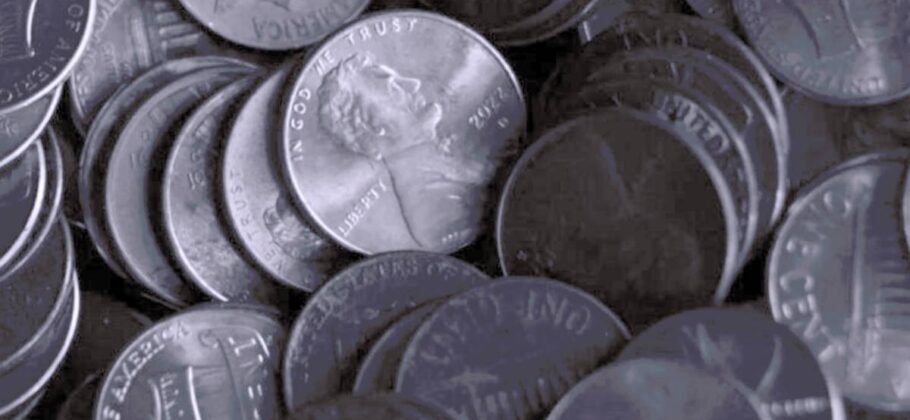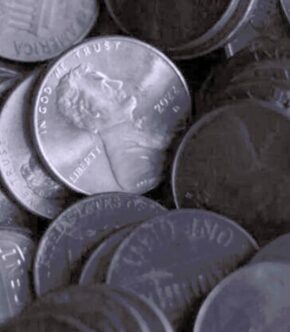The United States Mint has pressed the last penny. After more than two centuries in production, the copper one-cent coin that once bought biscuits and candy is no longer being made. The decision, ordered by President Donald Trump, marks the end of an American tradition stretching back to 1793 and raises big questions about how the country will handle everyday transactions in a world without new pennies.
Who Ordered the End of the Penny
President Trump officially directed the Treasury Department to stop minting pennies earlier this year, echoing long-standing concerns about how expensive the coin had become. The move followed a recommendation from the Department of Government Efficiency, which noted that producing 4.5 billion pennies in Fiscal Year 2023 cost taxpayers more than $179 million.
U.S. Treasurer Brandon Beach pressed the button to strike the final coin at the Philadelphia Mint and declared, “God bless America, and we’re going to save the taxpayers 56 million dollars.” Four more pennies were stamped for history before the presses shut down.
The last coin to be discontinued was the half-cent in 1857. Now the penny joins it in retirement.
The Mint reports that each penny costs 3.69 cents to produce. In other words, every new penny is a losing proposition for taxpayers. Trump’s own view was blunt. “For far too long the United States has minted pennies which literally cost us more than 2 cents,” he wrote in February. “This is so wasteful!”
The penny has also lost relevance in modern commerce. Billions remain in circulation, but most Americans rarely use them. They sit in jars, drawers, car cupholders, or get tossed aside entirely. Even banks have begun rationing them, a strange twist for a coin critics say is already too abundant.
What This Means for American Commerce
Ending the penny does not mean it disappears. About 250 billion pennies are still out there, and they remain legal tender. But because nearly two thirds of Federal Reserve coin terminal facilities are no longer distributing pennies, circulation will slow.
For businesses, the disappearance of new pennies has created real confusion. Many retailers say the government provided no guidance on how to handle cash transactions. As supplies ran low, stores had to adapt on the fly.
Some rounded down to avoid shortchanging customers. Others asked shoppers to bring exact change. A few offered prizes, like free drinks, in exchange for jars of pennies. Still others asked customers to round up for charity to avoid using the coins at all.
Retail groups warn that without federal rules on rounding to the nearest nickel, companies face compliance risks. States and even local governments often have their own rules, and inconsistent practices could trigger sales-tax audit problems.
Will Pennies Really Disappear?
Not soon. With hundreds of billions of pennies already in circulation, Americans will see them for many years. But experts expect usage to fall rapidly as coin terminals stop accepting them and stores shift toward rounding or electronic payments.
Some economists say the change may speed up the move toward a cashless society. If consumers rely more on cards or digital payments, the problem of rounding cash purchases simply disappears.
The end of the penny also raises questions about other coins. Nickels cost nearly 14 cents each to produce, making them even less efficient. But rounding to the nearest dime would cost consumers more than rounding to the nearest nickel, so policymakers are unlikely to eliminate the five-cent coin anytime soon.
Reactions to the penny’s end range from excitement to frustration to nostalgia.
Supporters of the change, including advocates who have pushed for abolition for decades, say it is a long-overdue step toward efficiency. But even they complain the rollout was chaotic. Jeff Lenard of the National Association of Convenience Stores put it simply: “We have been advocating abolition of the penny for 30 years. But this is not the way we wanted it to go.”
Some banks have rationed pennies. Retailers have pleaded for guidance. Shoppers are discovering that familiar jars of old coins suddenly carry more weight.
Meanwhile, historians and collectors mourn the loss of a small but meaningful piece of national identity. University of Houston coin historian Frank Holt sees pennies as tiny reflections of America itself. “They reflect our politics, our religion, our art, our sense of ourselves, our ideals, our aspirations,” he said.
A New Reality for Everyday Transactions
Change in America is changing. Even though pennies will remain in circulation, the era of new ones is over. The Mint estimates that ending production will save $56 million a year, but the transition may be bumpy as businesses adapt.
For now, the penny moves from everyday annoyance to historical artifact. It will still buy nothing, still gather dust in jars, still remind people of childhood piggy banks. But it will never be made again.
The smallest coin has reached the end of its long story, and American commerce is already feeling the shift.











